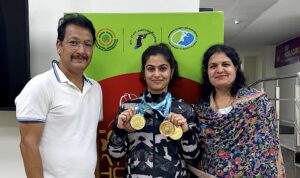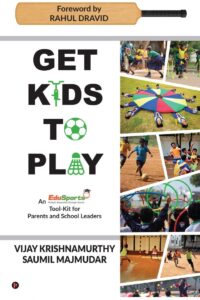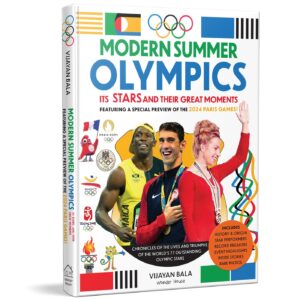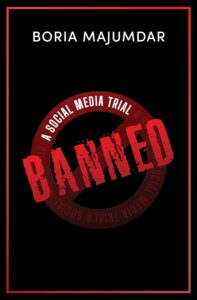
A long-drawn public interest litigation, focussed on sports governance, may be heading to its logical end with the Delhi High Court listing the case for arguments on January 8, 2021. Another PIL, of more recent vintage, challenging the decision of the Ministry of Youth Affairs and Sports to grant recognition to 41 National Sports Federations has also drawn quite some attention.
On November 6, the Court ordered the Ministry to indicate whether these 41 NSFs are in compliance with the National Sports Development Code of India 2011, with the Ministry stating that it will submit the replies of the NSFs and the reason for its own satisfaction with each NSF. The petitioner Rahul Mehra has claimed that each NSF is in violation of the Code and does not deserve recognition.
It is well known that the Ministry officials have been very generous in enforcing the Code, allowing some NSFs to be in violation of the norms laid down in the Code. Admittedly, it is difficult to enforce adherence to two dozen areas specified in the Code, but some must be non-negotiable and all NSFs will have to comply.
These must include age and tenure specifications for office-bearers in an NSF, composition of the electoral college of each NSFs, holding of elections in time for smooth transition, transparency in financial dealings, representation to athletes in governing bodies, the selection of national teams and conduct of National Championships.
However, the Ministry cannot be turning a blind eye to violations by National Sports Federations, making it seem as if the recognition of an NSF is handed out at the whim and fancy of an official. In the recent years, the double standards that result from such an ad-hoc approach have been highlighted.
Examples of ad hoc methods
Two instances will illustrate this amply.
First, the Rowing Federation of India had to scramble to amend its constitution and hold a third general meeting in the span of three months before securing the Ministry’s nod. The bone of contention was the electoral college having three members from each unit. But when Fencing Association of India committed a similar infringement, the Ministry had no issues and granted it recognition.
Second, the Ministry has played light and shade with Equestrian Federation of India since 2013, asking it to comply with the Code. For years, EFI has been stalling that process on some pretext or the other, even writing to the Ministry with affirmation that it had a roadmap for compliance before taking the stand that it runs a ‘peculiar’ sport and so cannot be brought under the ambit of the Code.
This PIL against the Ministry’s decision to grant recognition to 41 NSFs is but another chapter in a long drawn legal battle that precedes the compilation of the National Sports Development Code of India 2011 in the wake of Court directive. The 2011 Code was put together after the Court asked the Ministry to enforce the Government guidelines, first issued in 1975 but kept in abeyance from 2001.
As for the PIL itself, filed in January 2010 in the wake of scheduling of Hockey India elections, it has throbbed and shone the torch on sports governance in the country. This is the case that is heading to a closure and awaits the (final) arguments early next year. It may have ended sooner had the Ministry been able to stick to timelines but an instance of Covid-19 has impacted that.
The Ministry has not been able to submit a convenience file – and Rahul Mehra just about filed his only a day before the Court met on November 6, 2020. From the Court orders, it is apparent that the case file runs into 22 volumes over 7300 pages. It is also clear that Rahul Mehra’s convenience file ran over 3000 pages and the Court observed that it could hardly be called a brief convenience file.
The Ministry now has four more weeks to complete the task of briefing the Additional Solicitor General Chetan Sharma – who is recovering from Covid-19 infection – and preparing the convenience file. These will help the Court when it hears arguments and proceeds towards delivering a judgement in the case which has been listed before it 167 times so far, dating back to January 13, 2010.
There are many other petitions bunched with this case, but one needs mention here.
Start-and-halt reviews
This was filed in December 2015, five months after the Ministry formed of a panel to revise the Sports Code. The key objections were on the inclusion of the Indian Olympic Association President and four persons who were officers of the Central Government or its advisors. On December 15, 2015, the Court opined that the panel should not finalise its recommendations until the next hearing.
It is not clear if that nine-member Committee, formed on July 22, 2015 and chaired by Justice (retd.) CK Mahajan, has met again. Even as the Delhi High Court sought details from the Ministry about the nature of the consultative process adopted by the panel, the number of written submissions received and the mode of eliciting such suggestions, the Ministry formed another panel in January 2017.
The Injeti Srinivas Committee was constituted on January 5, 2017, but even as it was going through the process, the Delhi High Court requested the Committee on February 28, 2017 not to publish its report and instructed the Ministry to indicate the number of meetings the Committee held and the groups/individuals it consulted for the purposes of its deliberations.
Despite the Court order not to publish it, on August 31, 2017, an enterprising journalist broke the story of how the Draft Code had envisaged the barring of politicians and bureaucrats from holding office in any of the National Sports Federations. That report on a website made no mention of the fact that the Draft Code was in the Court’s possession.
On the contrary, it said all that was needed for the 2017 Draft Code to become functional was for the Ministry to issue a notification. It was on November 16, 2018 that the Ministry was able to secure the Court’s permission (with some riders) to take the Draft Code back from the sealed envelope for further consultations with the concerned stakeholders and finalise the Code.
Nearly a year later, after a meeting with the Indian Olympic Association and National Sports Federations, the Ministry decided that it would constitute a committee to review the Draft Code 2017. And the Court stayed the Committee’s proceedings after a pliant that it includes officials of some National Sports Federations.
Series of objections
The Ministry must be scratching its collective head after objections were raised against many Government officials in a panel, an IOA representative being in the committee, athletes of older vintage being part of the panel and ‘conflicted’ officials of NSFs being part of the group that would review the Sports Code or the Draft.
Clearly unwilling to notify the Draft Code in its present form, the Ministry has preferred to go in the wait and watch mode, occasionally pointing out that policy making is the prerogative of Government. It will be interesting to see what emerges at the end of these cases but for now, it can be said that the Draft National Code for Good Governance in Sports, 2017, has had some journey thus far.
[Image courtesy: Powerpoint Design Ideas]








A long drawn red tapeism battle but yes as you say we see light at the end if the tunnel. Thanks to all journalists
Listed for arguments does not remotely suggest a time frame for early conclusion. A logical finish has to happen in all cases.
My common sense( Definition: that sense which is uncommonly found in a common man) tells me another decade could roll on as the Govt is not serious and groping in the darkness of uncertainty.